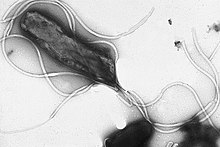

This is a timeline of the events relating to the discovery that peptic ulcer disease and some cancers are caused by H. pylori. In 2005, Barry Marshall and Robin Warren were awarded the Nobel Prize in Physiology or Medicine for their discovery that peptic ulcer disease (PUD) was primarily caused by Helicobacter pylori, a bacterium with affinity for acidic environments, such as the stomach. As a result, PUD that is associated with H. pylori is currently treated with antibiotics used to eradicate the infection. For decades prior to their discovery, it was widely believed that PUD was caused by excess acid in the stomach. During this time, acid control was the primary method of treatment for PUD, to only partial success. Among other effects, it is now known that acid suppression alters the stomach milieu to make it less amenable to H. pylori infection.
Background
Before the 1950s, there were many microbiological descriptions of bacteria in the stomach and in gastric acid secretions, lending credence to both the infective theory and the hyperacidity theory as being causes of peptic ulcer disease. A single study, conducted in 1954, did not find evidence of bacteria on biopsies of the stomach stained traditionally; this effectively established the acid theory as dogma. This paradigm was altered when Warren and Marshall effectively proved Koch's postulates for causation of PUD by H. pylori through a series of experiments in the 1980s; however, an extensive effort was required to convince the medical community of the relevance of their work. Now, all major gastrointestinal societies agree that H. pylori is the primary nondrug cause of PUD worldwide, and advocate its eradication as essential to treatment of gastric and duodenal ulcers. Additionally, H. pylori has been associated with lymphomas and adenocarcinomas of the stomach, and has been classified by the World Health Organization as a carcinogen. Advances in molecular biology in the late 20th century led to the sequencing of the H. pylori genome, resulting in a better understanding of virulence factors responsible for its colonization and infection, on the DNA level.
Pre-20th century
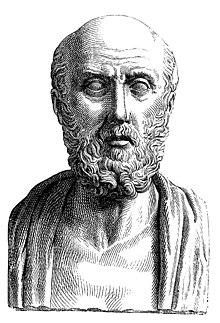
- Pre 16th century
- Hippocrates first describes gastric symptoms.
- Avicenna notes the relationship between gastric pain and mealtimes.
- 1586
- Marcellus Donatus of Mantua performs autopsies and describes gastric ulcers.
- 1688
- Johannes von Murault observes duodenal ulcers.
- 1728
- Stahl hypothesizes that some fevers are related to gastric inflammation and ulceration.
- 1761
- Pain is associated with stomach ulcers.
- 1799
- Matthew Baillie publishes a description of ulcers.
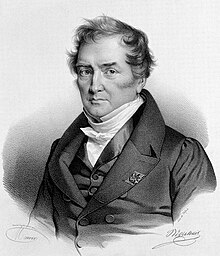
- 1821
- Nepveu argues for a relationship between gastritis and gastric cancer.
- 1822
- William Beaumont first demonstrates the acidity of the stomach and a relationship between acid levels and mood.
- 1868
- Kussmaul suggests using bismuth compounds, an antibacterial agent, to treat peptic ulcers (bismuth subsalicylate has since been used in many commercial drugs, including Pepto Bismol as part of antibacterial H. pylori treatment). The antibacterial properties of bismuth were not known until much later.
- 1875
- G. Bottcher and M. Letulle hypothesize that ulcers are caused by bacteria.
- 1880
- J. Cohnheim suggests that ulcers may be caused by chemical factors.
- 1881
- Klebs notes the presence of bacteria-like organisms in the lumen of the gastric glands.
- 1889
- Walery Jaworski describes spiral organisms in sediment washings of humans. He suggests these organisms might be involved with gastric disease.
- 1892
- Giulio Bizzozero observes spiral organisms in the stomach of dogs.

- 1896
- Saloon finds spirochetes in the stomachs of cats and mice.
1900–1950
- 1905
- F. Reigel suggests that ulcers are caused by excess acid.

- 1906
- Krienitz finds bacteria in the stomach of people with gastric cancer.
- Turck feeds dogs Bacillus coli and produces ulcers.
- 1907
- Berkley Moynihan suggests that acid is a cause of ulcers.
- 1910
- Schwartz publishes the excess acid theory of the ulcer, coining the famous phrase "no acid, no ulcer."
- Gibelli claims to be unable to reproduce Turck's study where he artificially created ulcers by feeding dogs bacteria.

- 1913
- Rosenow suggests that streptococci produce ulcers.
- 1915
- Antacids are first recommended for the treatment of PUD.
- Bacteria are associated with PUD, but it is assumed that the bacteria reside in the mouth.
- 1919
- Katsuya Kasai and Rokuzo Kobayashi isolate spirochetes in cats and transmit them to rabbits, producing ulcers.
- 1921
- Luger discovers spirochetes in the gastric juice, and associates their presence with gastric cancer.

- 1924
- Luck and Seth discover urease in the human stomach, which they believe is naturally occurring.
- 1925
- Hoffman injects a small sample from a human with PUD into a guinea pig, producing ulcers, and isolates a bacterium which he believes caused the ulcers.
- 1936
- First edition of the Russian Large Medical Encyclopedia suggests infection is one of the causes of PUD.
- 1939
- A. Stone Freedberg begins a study to look for bacteria in the human stomach at Beth Israel Hospital. He finds H. pylori. It is rumored that others cannot reproduce the results, although no negative results are published.
- James Doenges describes spirochetes in autopsies.
- 1940
- Freedberg and Baron observe spirochetes in autopsies. Freedberg abandons his research, however, after his boss advises him to move to another subject. In 2005, Marshall speculates that Freedberg would have won the Nobel Prize in 1951 had he continued his work.
- 1948
- Fitzgerald and Murphy hypothesize that PUD is caused by acid eating away mucosa, and demonstrate the effectiveness of urea as a treatment for PUD.
1950–1970
- 1951
- J. Allende publishes a book describing the treatment of gastric ulcers with penicillin.
- 1953
- Dintzis and Hastings are able to stop urease production in mice with antibiotics, suggesting a relationship between urease and a bacterial infection.
- 1954
- Palmer publishes a study which finds no bacteria in the human stomach. He concludes earlier discoveries were a result of contamination. He chooses not to use a silver staining method, which will be later used to reveal H. pylori by Warren and Marshall.
- 1955
- Tarnopolskaya observes that penicillin seems to cure some peptic ulcers.
- Moutier and Cornet suggest treating gastritis with antibiotics.
- Kornberg and Davies observe that antibiotics reduce urease in cats.
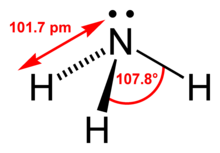
- 1957
- Charles Lieber and Andre Lefèvre discover that antibiotics reduce gastric urea to ammonia conversion.
- 1958
- Gordon observes that penicillin cures some peptic ulcers.
- John Lykoudis successfully treats his own gastroenteritis with antibiotics.
- Lieber and Lefèvre present their results at the World Congress of Gastroenterology in Washington. It is not well received because of the widespread belief that bacteria cannot survive in the human stomach, due to Palmer.
- 1959
- Lieber and Lefèvre publish a follow-up study demonstrating that antibiotics prevent the conversion of urea to ammonia in the human stomach.
- Conway et al. call into question the extent of urease produced by bacteria in mice, as an argument against the bacterial theory of PUD.

- 1960
- Vital and Orrego observe Campylobacter-like organisms in the stomachs of cats and dogs.
- Lykoudis is awarded a Greek patent (#22,453) for his antibiotic treatment of PUD.
- 1962
- Susser and Stein publish a paper identifying a cohort phenomenon of PUD in England. This is taken as evidence for stress causing PUD.
- 1964
- Lykoudis presents his antibiotic treatment for PUD at a meeting of the Medico-Surgical Society in Greece. He is largely shunned by the medical establishment.
- 1966
- Lykoudis' manuscript is rejected by the Journal of the American Medical Association.
- 1967
- Susumu Ito describes Campylobacter-like organisms attached to a gastric epithelial cell.
- 1968
- Lykoudis is fined 4,000 drachmas for treating PUD patients with his treatment, which includes antibiotics.
1970–21st century
- 1971
- Howard Steer observes H. pylori from biopsies of a patient with ulcers.
- 1972
- The first report of successfully using furazolidone (an antibacterial agent) to treat PUD in China.
- 1974
- Morozov observes H. pylori; he does not connect this discovery to PUD.
- A well regarded study of PUD is published which does not mention bacteria.
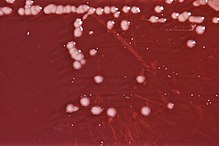
- 1975
- Steer and Colin-Jones publish their results regarding H. pylori and its relation to PUD. They decide that it was Pseudomonas, a contaminant, and not related to PUD.
- 1978
- At a meeting of the American Gastroenterology Association in Las Vegas, several papers are presented which suggest that acid control via H2 blockers is ineffective at curing PUD.
- 1979
- Ramsey publishes a study demonstrating that bismuth can help eradicate PUD. Bismuth is an antibacterial agent, although this is not recognized by Ramsey.
- J. Robin Warren first observes H. pylori in a gastric biopsy.
- Fung, Papadimitriou, and Matz observe H. pylori.
- 1981
- Yao Shi observes bacteria in the stomach, but he believes they are passing through the stomach and not colonizing it.
- July: Barry Marshall joins gastroenterology division of Royal Perth Hospital and meets Robin Warren
- October: Marshall and Warren successfully treat their first PUD patient with antibiotics.
- 1982
- Satoha et al. find evidence for an infectious cause of ulcers in rats.
- Marshall and Warren begin their first study to determine the relationship between H. pylori and PUD.
- First successful culturing of H. pylori performed; it occurs almost by accident.
- October: Marshall discovers the bacteria he is investigating are not campylobacteria, by looking at electron micrographs.
- October 2: Marshall presents his and Warren's results at a local College of Physicians meeting. He meets with criticism, which Marshall later admits was well-founded (at least in part).

- 1983
- January: Two letters authored by Warren and Marshall, respectively, are sent to The Lancet describing their results.
- February: Gastroenterological Society of Australia rejects Marshall's abstract to present his research at their yearly conference. They deem it in the bottom 10% of papers submitted. The same abstract is accepted for presentation at a Campylobacter workshop in Brussels.
- April: Marshall and Ian Hislop begin a study to compare bismuth treatment with cimetidine. The study is abandoned because it is inconclusive.
- June: Warren and Marshall's letter appears in The Lancet.
- September: H. pylori is observed in patients outside of Australia.
- After the appearance of the letters in The Lancet, groups around the world begin isolating H. pylori.
- 1984
- A paper describing Marshall and Warren's results is accepted by the Gastroenterological Society of Australia for presentation.
- Marshall and Goodwin attempt to infect pigs with H. pylori in an attempt to demonstrate that it causes PUD. The experiment fails.
- Marshall and Warren's paper is accepted by The Lancet in May and published in June. Many reviewers dislike the paper.
- McNulty and Watson are able to reproduce Marshall and Warren's results.
- June 12: Marshall intentionally consumes H. pylori and becomes ill. He takes antibiotics and is relieved of his symptoms.
- The National Health and Medical Research Council of Australia fully funds Marshall's research into H. pylori.
- A study is published in China about the effectiveness of treating PUD with an antibacterial agent.
- July 31: The New York Times publishes an article by its medical correspondent Dr. Lawrence K. Altman on the possible link between H. pylori and PUD. He states in 2002, "I’ve never seen the medical community more defensive or more critical of a story" since he joined the newspaper in 1969.
- Thomas Borody developed the bismuth-based "Triple Therapy" consisting of bismuth and two antibiotics. This became the first truly successful treatment for H. pylori with an eradication rate greater than 90%.
- 1985
- Marshall publishes the results of self-induced infection.
- 1987
- Drumm and colleagues following a study of children reported in the New England Journal of Medicine that Helicobacter pylori was specifically associated with primary or unexplained gastric inflammation and primary duodenal ulceration, whereas the bacteria were not found in association with secondary gastric inflammation and ulcers due to causes such as Crohn's disease or critical illness. Because gastritis and duodenal ulceration are rare in children, this study had the capacity to demonstrate that Warren and Marshall were correct in claiming that H. pylori was a specific pathogen rather than, as had been suggested by some, merely an opportunistic colonizer of an inflamed or ulcerated mucosal surface. This was the first time that New England Journal of Medicine, the world's leading medical journal, published a study on Helicobacter pylori.
- Morris intentionally consumes H. pylori. Like Marshall, he becomes ill, but unlike Marshall, he is not completely cured by antibiotics. The infection will remain with him for three years.
- An extensive study in Dublin demonstrates that eradicating H. pylori substantially reduces recurrence of ulcers.
- 1990
- Borody's triple therapy became commercialized in the United States under the product name Helidac.
- Rauws and Tytgat describe cure of duodenal ulcer by eradication of H. pylori using Borody's triple therapy combination. Triple-therapy, modernized to a proton pump inhibitor and two antibiotics, soon becomes first line therapy for eradication.
- World Congress of Gastroenterology recommends eradicating H. pylori to cure duodenal ulcers.
- First report of resistance of H. pylori to the antibiotic metronidazole. Resistance of H. pylori to treatment will lead to the development of many different antibiotic and proton pump inhibitor regimens for eradication.
- 1992
- Fukuda et al. prove ingestion of H. pylori causes gastritis in rhesus monkeys.
- Covacci et al. sequence the CagA gene, which encodes for a cytotoxin-associated surface protein, which correlated strongly with strains of H. pylori that caused duodenal ulcers. This was the first description of a virulence factor for H. pylori infection determined by molecular techniques.

- 1994
- Fujioka et al. prove similar results as those from Fukuda et al.
- Patents for acid reducing drugs expire, removing financial incentive to resist antibiotics as treatment of PUD.
- A conference held by National Institute of Health (USA) demonstrates the general acceptance of H. pylori as cause of PUD in the US.
- The World Health Organization's International Agency for Research on Cancer declares H. pylori a Group 1 carcinogen.
- Parsonnet et al. describe an association between H. pylori and lymphomas of the gastrointestinal tract. These malignant ulcers can also be treated by eradicating Helicobacter.
- 1997
- Tomb et al. complete sequencing of the entire 1,667,867 base pairs of the H. pylori genome. This assists in identifying new virulence factors for the infectivity of H. pylori on the molecular level.
- 2001
- Chan et al. show in a randomized control trial that eradication of H. pylori even prevents bleeding from ulcers that is caused by aspirin and non-steroidal anti-inflammatory drugs.
- 2002
- The European Helicobacter Pylori Study Group published the Maastricht 2-2000 Consensus Report, suggesting a "test-and-treat" strategy for H. pylori in young patients without atypical symptoms. This strategy advocates the use of noninvasive testing to evaluate for H. pylori and simply treating if found, even in the absence of ulcer disease documented on endoscopy.
- 2005
- Warren and Marshall are awarded the Nobel Prize in Physiology or Medicine for their work on H. pylori and PUD.
References
- ^ Kidd, Mark; Irvin M. Modlin (1998). "A century of Helicobacter pylori". Digestion. 59 (1): 1–15. doi:10.1159/000007461. PMID 9468093.
- ^ Unge, Peter (2002). "Helicobacter pylori treatment in the past and in the 21st century". In Barry Marshall (ed.). Helicobacter Pioneers: Firsthand Accounts from the Scientists Who Discovered Helicobacters. Victoria, Australia: Blackwell Science Asia. pp. 203–213. ISBN 978-0-86793-035-1.
- ^ Buckley, Martin J.M; Colm A. O'Morain (1998). "Helicobacter biology – discovery". British Medical Bulletin. 54 (1): 7–16. doi:10.1093/oxfordjournals.bmb.a011681. PMID 9604426.
- ^ Fukuda, Yoshihiro et al., "Kasai, Kobayashi and Koch's postulates in the history of Helicobacter pylori", in Helicobacter Pioneers, pp. 15–24.
- Bizzozero, Giulio (1893). "Ueber die schlauchförmigen Drüsen des Magendarmkanals und die Beziehungen ihres Epitheles zu dem Oberflächenepithel der Schleimhaut". Archiv für Mikroskopische Anatomie. 42: 82–152. doi:10.1007/BF02975307. S2CID 85338121.
- Figura, Natale & Laura Bianciardi, "Helicobacters were discovered in Italy in 1892: An episode in the scientific life of an eclectic pathologist, Giulio Bizzozero", in Helicobacter Pioneers, pp. 1–13.
- Turck, F.B. J.M (1906). "Ulcer of the stomach: Pathogenesis and pathology: Experiments in producing artificial gastric ulcer and genuine induced peptic ulcer". Journal of the American Medical Association. 46 (23): 872. doi:10.1001/jama.1906.62510500017003a.
- Rosenow, E.C. J.M (1913). "The production of ulcer of the stomach by injection of streptococci". Journal of the American Medical Association. 61 (22): 1947. doi:10.1001/jama.1913.04350230001001.
- Rosenow, E.C.; A.H. Sanford (1915). "The Bacteriology of Ulcer of the Stomach and Duodenum in Man". Journal of Infectious Diseases. 17: 219–226. doi:10.1093/infdis/17.1.219.
- Kasai, K.; R. Kobayashi (1919). "The stomach Spirochete Occurring in Mammals". Journal of Parasitology. 6 (1): 1–11. doi:10.2307/3271009. JSTOR 3271009.
- Luck; Seth (1924). "Gastric Urease". Biochemical Journal. 37 (6): 1227–1231. doi:10.1042/bj0181227. PMC 1259509. PMID 16743392.
- Hoffman, A (1925). "Experimental gastric duodenal inflammation and ulcer, produced with a specific organism fulfilling Koch's postulates". American Journal of the Medical Sciences. 170 (2): 212–219. doi:10.1097/00000441-192508010-00005.
- ^ Mozorov, Igor A., "Helicobacter pylori was discovered in Russia in 1974", in Helicobacter Pioneers, pp. 105–118.
- Freedberg, A. Stone, "An Early Study of Human Stomach Bacteria", in Helicobacter Pioneers, pp. 25–28.
- Doenges, James (1939). "Spirochaetes in the gastric glands of the Macaus Rhesus and Human without definite history of related disease". Archives of Pathology. 27: 469–477.
- Freedberg, A.S.; L.E. Baron (1940). "The presence of spirochaetes in human gastric mucosa". American Journal of Digestive Diseases. 7 (10): 443–445. doi:10.1007/BF02997393.
- Altman, Lawrence K. (2005-12-06). "A Scientist, Gazing Toward Stockholm, Ponders 'What If?'". The New York Times. Retrieved March 12, 2011.
- O'Connor, Humphrey J. and Colm A. O'Morain, "Gastric urease in ulcer patients in the 1940s: The Irish connection", in Helicobacter Pioneers, pp. 29–38.
- Dintzis RZ, Hastings AB (July 1953). "The Effect of Antibiotics on Urea Breakdown in Mice". Proc. Natl. Acad. Sci. U.S.A. 39 (7): 571–8. Bibcode:1953PNAS...39..571D. doi:10.1073/pnas.39.7.571. PMC 1063826. PMID 16589306.
- Palmer, E.D. (1954). "Investigation of the gastric mucosa spirochetes of the human". Gastroenterology. 27 (2): 218–220. doi:10.1016/S0016-5085(19)36173-6. PMID 13183283.
- Kornberg, H.L.; R.E. Davies (1955). "Gastric Urease". Physiological Reviews. 35 (1): 169–177. doi:10.1152/physrev.1955.35.1.169. PMID 14356931.
- Lieber, C.S.; A. Lefèvre (1957). "Effect of oxytetracycline on acidity, ammonia, and urea in gastric juice in normal and uremic subjects". Comptes Rendus des Séances et Mémoires de la Société de Biologie. 151 (5): 1038–1042. PMID 13500735.
- ^ Rigas, Basil and Efstathios D. Papavassiliou, "John Lykoudis: The general practitioner in Greece who in 1958 discovered etiology of, and a treatment for, peptic ulcer disease", in Helicobacter Pioneers, pp. 75–84.
- Lieber, Charles S. J., "How it was discovered in Belgium and the USA (1955–1976) that Gastric Urease was Caused by a Bacterial Infectio", in Helicobacter Pioneers, pp. 39–52.
- Lieber CS, Lefèvre A (August 1959). "Ammonia as a Source of Gastric Hypoacidity in Patients with Uremia". J. Clin. Invest. 38 (8): 1271–7. doi:10.1172/JCI103902. PMC 442081. PMID 13673083.
- Conway, E.J.; O. Fitzgerald; K. McGeeney; F. Geoghegan (1959). "The location and origin of gastric urease". Gastroenterology. 37 (4): 449–56. doi:10.1016/S0016-5085(19)35390-9. PMID 13811656.
- Vital, J.D.; H. Orrego (1960). "Electron Microscope Observations on the Fine Structure of Parietal Cells". Journal of Biophysical and Biochemical Cytology. 7 (2): 367–72. doi:10.1083/jcb.7.2.367. PMC 2224815. PMID 13842039.
- Susser, M.; Z. Stein (1962). "Civilization and peptic ulcer". Lancet. 1 (7221): 115–9. doi:10.1016/s0140-6736(62)91127-3. PMID 13918500.. Reprinted as Susser M, Stein Z (2002). "Civilization and peptic ulcer. 1962". International Journal of Epidemiology. 31 (1): 13–7. doi:10.1093/ije/31.1.13. PMID 11914283.
- Ito, Susumu (1967). "Anatomic structure of the gastric mucosa". In Heidel, US; Code, CF (eds.). Handbook of Physiology Section 6 Volume 2. American Physiological Society. pp. 705–741.
- ^ Steer, Howard W (2002). "The discovery of Helicobacter pylori in England in the 1970s". In Barry J. Marshall (ed.). Helicobacter pioneers: firsthand accounts from the scientists who discovered helicobacters, 1892–1982. Oxford: Blackwell. pp. 119–29. ISBN 978-0-86793-035-1.
- ^ Xiao, Shu Dong (2002). "How we discovered in China in 1972 that antibiotics cure peptic ulcer". In Barry J. Marshall (ed.). Helicobacter pioneers: firsthand accounts from the scientists who discovered helicobacters, 1892–1982. Oxford: Blackwell. pp. 165–202. ISBN 978-0-86793-035-1.
- Patrick, W.J.A.; D. Denham; A.P.M. Forrest (1974). "Mucous change in the human duodenum: A light and electron microscopic study and correlation with disease and gastric acid secretion". Gut. 15 (10): 767–76. doi:10.1136/gut.15.10.767. PMC 1412991. PMID 4434919.
- Steer, H.W.; D.G. Colin-Jones (1975). "Mucosal changes in gastric ulceration and their response to carbenoxolone sodium". Gut. 16 (8): 590–7. doi:10.1136/gut.16.8.590. PMC 1411007. PMID 810394.
- Peterson, Walter L (2002). "The Dallas experience with acute Helicobacter pylori infection". In Barry J. Marshall (ed.). Helicobacter pioneers: firsthand accounts from the scientists who discovered helicobacters, 1892–1982. Oxford: Blackwell. pp. 143–50. ISBN 978-0-86793-035-1.
- Ramsey E, K.V. Carey, et al. (1979). "Epidemic gastritis with hypochlorhydria". Gastroenterology. 76 (6): 1449–57. doi:10.1016/0016-5085(79)90415-3. PMID 437444.
- Warren, J. Robin (2002). "The discovery of Helicobacter pylori in Perth, Western Australia". In Barry J. Marshall (ed.). Helicobacter pioneers: firsthand accounts from the scientists who discovered helicobacters, 1892–1982. Oxford: Blackwell. pp. 151–64. ISBN 978-0-86793-035-1.
- Fung, W.P.; J.M Papadimitriou; L.R. Matz (1979). "Endoscopic, histological and ultrastructural correlations in chronic gastritis". American Journal of Gastroenterology. 71 (3): 269–79. PMID 443229.
- ^ Marshall, Barry (2002). "The discovery that Helicobacter pylori, a spiral bacterium, caused peptic ulcer disease". In Barry J. Marshall (ed.). Helicobacter pioneers: firsthand accounts from the scientists who discovered helicobacters, 1892–1982. Oxford: Blackwell. pp. 165–202. ISBN 978-0-86793-035-1.
- Satoh, H.; P.H. Guth; M.I. Grossman (1983). "Role of bacteria in gastric ulceration produced by indomethacin in the rat: cytoprotective action of antibiotics". Gastroenterology. 84 (3): 483–9. doi:10.1016/0016-5085(83)90071-9. PMID 6822322.
- Warren, J.R.; Barry Marshall (1983). "Unidentified curved bacilli on gastric epithelium in active chronic gastritis". Lancet. 1 (8336): 1273–5. doi:10.1016/S0140-6736(83)92719-8. PMID 6134060.
- McNulty, C.A.; D.M. Watson (1984). "Spiral bacteria of the gastric antrum". The Lancet. 1 (8385): 1068–9. doi:10.1016/S0140-6736(84)91469-7. PMID 6143990. S2CID 42600737.
- Altman, Lawrence K. (1984-07-31). "NEW BACTERIUM LINKED TO PAINFUL STOMACH ILLS". The New York Times. Retrieved March 12, 2011.
- Humphrey, Nancy (2002-09-27). "Award-winning journalist informs doctors, world". The Reporter, Vanderbilt University Medical Center's Weekly Newspaper. Retrieved March 12, 2011.
- Rimbara, Emiko; Fischbach, Lori A.; Graham, David Y. (2011). "Optimal therapy for Helicobacter pylori infections". Nature Reviews Gastroenterology & Hepatology. 8 (2): 79–88. doi:10.1038/nrgastro.2010.210. PMID 21293508. S2CID 23529476.
- Borody, TJ; Cole, P; Noonan, S; Morgan, A; Lenne, J; Hyland, L; Brandl, S; Borody, EG; George, LL (1989). "Recurrence of duodenal ulcer and Campylobacter pylori infection after eradication". The Medical Journal of Australia. 151 (8): 431–435. doi:10.5694/j.1326-5377.1989.tb101251.x. PMID 2687668. S2CID 26066525.
- Borody, T. J.; George, L. L.; Brandl, S.; Andrews, P.; Lenne, J.; Moore-Jones, D.; Devine, M.; Walton, M. (1992-01-01). "Helicobacter pylori Eradication with Doxycycline—Metronidazole—Bismuth Subcitrate Triple Therapy". Scandinavian Journal of Gastroenterology. 27 (4): 281–284. doi:10.3109/00365529209000075. ISSN 0036-5521. PMID 1589705.
- Drumm B; et al. (1987). "Association of Campylobacter pylori on the gastric mucosa with antral gastritis in children". New England Journal of Medicine. 316 (25): 1557–1661. doi:10.1056/nejm198706183162501. PMID 3587289.
- Morris, A.; G. Nicholson (1987). "Ingestion of Campylobacter pyloridis causes gastritis and raised fasting gastric pH". American Journal of Gastroenterology. 82 (3): 192–9. PMID 3826027.
- Coghlan J, H. Humphrise, et al. (1987). "Campylobacter pylori and recurrence of duodenal ulcers—a 12-month follow-up study". The Lancet. 2 (8568): 109–11. doi:10.1016/S0140-6736(02)93231-9. PMID 2890019.
- "HELIDAC® Therapy". dailymed.nlm.nih.gov. Retrieved 2017-02-14.
- ^ Rauws E, Tytgat G (1990). "Cure of duodenal ulcer associated with eradication of Helicobacter pylori". Lancet. 335 (8700): 1233–5. doi:10.1016/0140-6736(90)91301-P. PMID 1971318. S2CID 41888935.
- Becx M, Janssen A, et al. (1990). "Metronidazole-resistant Helicobacter pylori". Lancet. 335 (8688): 539–40. doi:10.1016/0140-6736(90)90772-W. PMID 1968548. S2CID 34740886.
- ^ Malfertheiner P, Mégraud F, O'Morain C, et al. (2002). "Current concepts in the management of Helicobacter pylori infection—the Maastricht 2-2000 Consensus Report". Aliment Pharmacol Ther. 16 (2): 167–80. doi:10.1046/j.1365-2036.2002.01169.x. PMID 11860399. S2CID 6166458.
- Covacci A, Censini S, Bugnoli M, et al. (1993). "Molecular characterization of the 128-kDa immunodominant antigen of Helicobacter pylori associated with cytotoxicity and duodenal ulcer". Proc Natl Acad Sci USA. 90 (12): 5791–5. Bibcode:1993PNAS...90.5791C. doi:10.1073/pnas.90.12.5791. PMC 46808. PMID 8516329.
- <Please add first missing authors to populate metadata.> (1994). IARC Monograph on the Evaluation of Carcinogenic Risks to Humans. Lyon: World Health Organization. pp. 177–240.
- Parsonnet J, Hansen S, Rodriguez L, et al. (1994). "Helicobacter pylori infection and gastric lymphoma". New England Journal of Medicine. 330 (18): 1267–71. doi:10.1056/NEJM199405053301803. PMID 8145781.
- Tomb J, White O, Kerlavage A, et al. (1997). "The complete genome sequence of the gastric pathogen Helicobacter pylori". Nature. 388 (6642): 539–47. Bibcode:1997Natur.388..539T. doi:10.1038/41483. PMID 9252185.
- Aspholm-Hurtig M, Dailide G, Lahmann M, et al. (2004). "Functional adaptation of BabA, the H. pylori ABO blood group antigen binding adhesin". Science. 305 (5683): 519–22. Bibcode:2004Sci...305..519A. doi:10.1126/science.1098801. PMID 15273394. S2CID 26489149.
- Chan F, Chung S, Suen B, et al. (2001). "Preventing recurrent upper gastrointestinal bleeding in patients with Helicobacter pylori infection who are taking low-dose aspirin or naproxen". N Engl J Med. 344 (13): 967–73. doi:10.1056/NEJM200103293441304. PMID 11274623.
- "Nobel Prize in Medicine 2005". Nobel Foundation. Retrieved October 3, 2006.
External links
- Barry J. Marshall (2001). "One hundred years of discovery and rediscovery of Helicobacter pylori and its association with peptic ulcer disease". Chapter 3 of Helicobacter pylori: Physiology and Genetics ed. by Harry L. T. Mobley, George L. Mendz, and Stuart L. Hazell. ASM Press. ISBN 1-55581-213-9.
Categories: